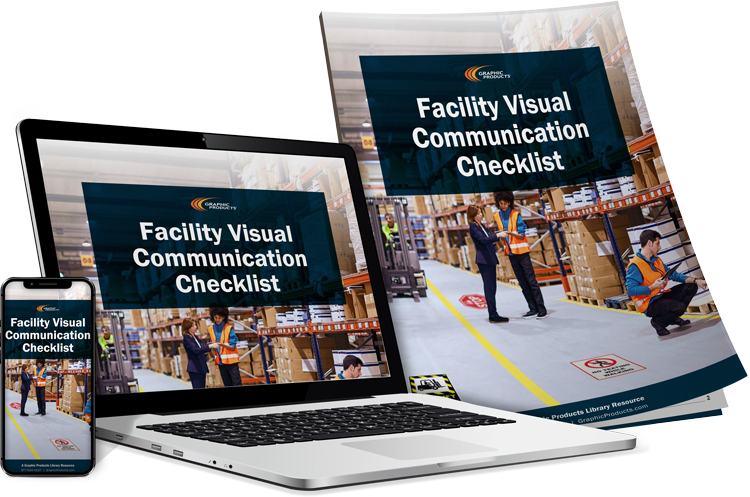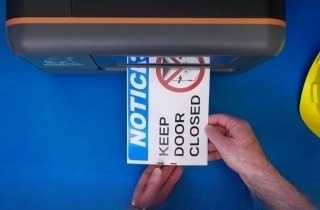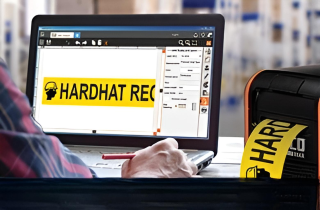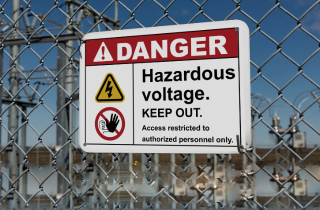5 Industries that Benefit from Custom Industrial Safety Signs and Why

Why Are Custom Industrial Safety Signs Essential for Protecting Workers?
In every high-risk workplace, silent protectors stand guard—custom signs that warn, direct, and ultimately save lives. According to the U.S. Bureau of Labor Statistics (BLS), 2023 saw 2.6 million nonfatal workplace injuries and illnesses, with an incidence rate of 2.4 cases per 100 full-time workers. Even more concerning: 5,283 workers lost their lives on the job.
These figures underscore a hard truth: without fast, clear communication, protecting workers becomes much harder.
Custom workplace signs—including industrial safety signs designed for specific hazards—address this challenge head-on. Unlike generic warnings, custom signs reflect a facility’s specific risks, procedures, and environments. They guide safe behavior, prevent incidents, and help maintain operational continuity—all while supporting regulatory compliance and a strong safety culture.
The Role of Custom Industrial Safety Signs in Compliance
Custom workplace signs are a core part of maintaining compliance with safety regulations set by OSHA (Occupational Safety and Health Administration), ANSI (American National Standards Institute), and NFPA 70E (National Fire Protection Association). These standards require clear, visible communication of hazards, operational procedures, and emergency protocols to protect workers and visitors alike.
For example:
- Construction safety signs support OSHA’s fall protection rules.
- Machine safety signage enforces lockout/tagout procedures.
- Electrical panel labels must display voltage details, arc flash boundaries, and PPE requirements to comply with NFPA 70E.
By following these signage guidelines, businesses minimize regulatory risk, avoid costly citations, and build a safety culture employees can rely on.
Here’s how five key industries rely on custom signage every day to keep people safe and operations running smoothly.
Construction: Why Industrial Safety Signs Are Critical on Active Job Sites
On a construction site, hazards can shift from one day to the next. One morning, an open trench appears; the next, a new crane or scaffold transforms the entire landscape. Custom construction safety signs help workers quickly recognize and adapt to these evolving conditions—preventing injuries, reducing confusion, and avoiding costly delays.
A framing crew might rely on signage such as “Fall Protection Required Beyond This Point,” while ground teams look for “Caution: Overhead Load” to steer clear of suspended hazards. Access points marked “Authorized Personnel Only—PPE Required” prevent untrained individuals from entering dangerous zones.
Examples of highly effective custom signs commonly used on construction sites include:
- “Danger: Open Trench Ahead”
- “Hard Hat and Safety Vest Required”
- “Keep Out: Demolition Zone”
These clear, site-specific warnings foster a safer job site and help projects stay on schedule—avoiding preventable interruptions that could bring operations to a halt.
Manufacturing: How Facilities Use Machine Safety Signage to Protect Workers
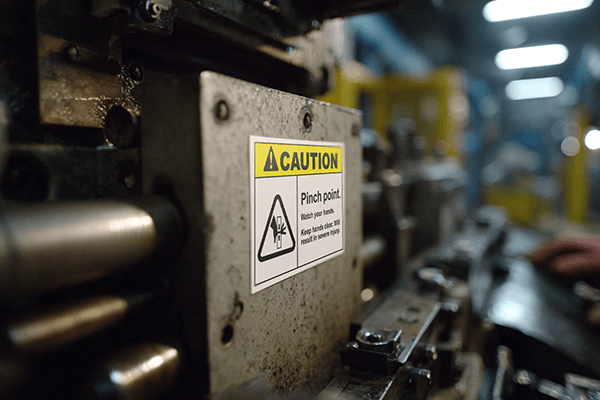
Manufacturing floors are filled with fast-moving conveyors, robotic systems, and heavy machinery. In these high-speed environments, every second counts—and custom machine safety signage gives workers the clear, instant guidance they need to act safely and efficiently.
Imagine a maintenance technician preparing to service a conveyor. A sign nearby might read: “Lockout Required Before Servicing—See Panel Instructions.” Next to a robotic press, a bright yellow warning might state, “Pinch Point—Keep Hands and Clothing Clear.” These messages reduce the risk of serious injury and support safe task execution.
Common machine safety signage used in manufacturing facilities includes:
- “Do Not Operate Without Guards in Place”
- “Emergency Stop Button — Push in Case of Jam”
- “Hearing Protection Required in This Area”
These purpose-built custom industrial safety signs not only enhance compliance and reinforce safety culture—they also help maintain confidence on the production floor, keeping schedules on track and workers protected. Tools like the DuraLabel Toro Max Industrial Sign and Label System and our free LabelForge PRO Design Software allow manufacturers to create machine-specific signage on demand—ensuring every message is clear, compliant, and built to last.
Utilities & Energy: What Electrical Panel Labeling Looks Like Across Regulated Facilities
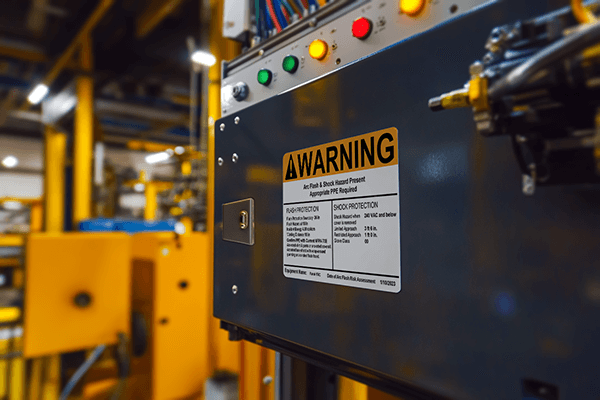
In the utilities and energy sector, employees regularly work with high-voltage systems and complex control equipment. Electrical panel labeling turns intricate layouts into clear, actionable instructions—keeping workers safe and helping facilities stay compliant with NFPA 70E and OSHA standards.
A technician servicing a control cabinet might rely on a label stating: “480V—Arc Flash Hazard—PPE Level 2 Required” to recognize that personal protective equipment is required before they begin work. Nearby, other labels identify isolation points and voltage ratings needed for safe lockout/tagout (LOTO) procedures.
In the utilities and energy sector, employees regularly work with high-voltage systems and complex control equipment. Electrical panel labeling turns intricate layouts into clear, actionable instructions—keeping workers safe and helping facilities stay compliant with NFPA 70E and OSHA standards.
A technician servicing a control cabinet might rely on a label stating: “480V—Arc Flash Hazard—PPE Level 2 Required” to recognize that personal protective equipment is required before they begin work. Nearby, other labels identify isolation points and voltage ratings needed for safe lockout/tagout (LOTO) procedures.
Effective electrical panel labeling often includes:
- Panel ID and power source
- Voltage rating and incident energy
- Arc flash boundaries and required PPE
These customized labels remove ambiguity, helping workers quickly assess hazards and take appropriate precautions. The result: fewer injuries, better compliance, and smoother maintenance—even in high-pressure environments where there’s no margin for error.
Warehousing & Logistics: How Visual Management Signage Keeps Fast-Moving Environments Organized
Warehouses and distribution centers operate at a relentless pace. Forklifts maneuver through aisles, teams prepare shipments on tight deadlines, and any misstep can disrupt the flow. Visual management signage brings order out of potential chaos, reducing risks and improving flow.
A new employee might rely on a sign reading “Receiving Area Only—No Storage” to avoid placing pallets in the wrong zone. Floor markings help guide foot traffic around active forklift lanes, while overhead signage directs truck drivers to the correct docks to prevent confusion or costly delays.
Common types of visual management signage used in warehouse operations include:
- “Aisle 5 — Fragile Items Only”
- “Yield to Pedestrians”
- “Dock 3 — Outbound Shipping”
These targeted visual cues help staff and equipment move safely and efficiently. In high-volume environments where timing is critical, well-placed signs support both safety and operational flow.
Healthcare & Laboratories: How Custom Industrial Safety Signs Safeguard Staff and Patients in High-Risk Settings
In healthcare and laboratory environments, custom signage plays a vital role in protecting patients, staff, and sensitive materials. With many hazards hidden from immediate view, custom workplace signs serve as critical visual reminders—reinforcing required precautions and guiding strict hygiene protocols.
A nurse preparing to enter an isolation room might pause at a sign stating: “Gown, Gloves, Face Shield Required Before Entry.” In a laboratory, a freezer door labeled “Store Only Flammable Samples—No Food or Drinks,” helps prevent dangerous cross-contamination.
Additional specialized signs that support safety and compliance in healthcare and lab settings include:
- “Biohazard: Bloodborne Pathogens — PPE Required”
- “Radiation Area — Authorized Personnel Only”
- “Emergency Shower and Eyewash Station — Keep Clear”
These targeted messages provide clear, immediate direction—helping healthcare professionals and lab technicians maintain safety while focusing on critical patient care and research responsibilities.
DuraLabel Custom Workplace Signage Solutions
Selecting the right signage starts with understanding your facility’s specific risks and operational demands. Whether you work in construction, manufacturing, utilities, warehousing, or healthcare, custom workplace signs provide the clarity, durability, and compliance support needed to keep teams safe and operations running smoothly.
DuraLabel offers signage solutions engineered for tough environments, with materials designed for long-lasting performance indoors and out. With DuraLabel Industrial Sign and Label Systems and our free LabelForge PRO Design Software, facilities can create custom signs featuring tailored text, graphics, and barcodes that meet precise regulatory and operational requirements.
Partnering with DuraLabel helps reduce downtime, reinforce a strong safety culture, and drive long-term success. Not sure which signs your facility needs? Download DuraLabel’s free Facility Signage Handbook or call 1-888-695-5670 to connect with a DuraLabel representative for expert support.
Read Next:
OSHA Signs Regulations and Compliance: Everything You Need to Know
Related Resources

Industrial Safety Labels | Label Signage | Sign Label
The accurate interpretation of safety signs is crucial to prevent injuries and save lives. OSHA has set ...
Read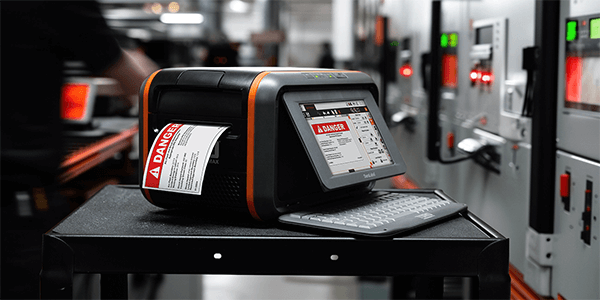
Top 10 Uses for DuraLabel Industrial Label Printers
How DuraLabel Printers are Used Across 10 Key Industrial Applications DuraLabel printers are built to solve ...
Read
New Safety Controls Expand As Industrial Laser Use Grows
Laser use in industry has seen a sharp increase in the past year and the technology is being used for a ...
Read.png)
